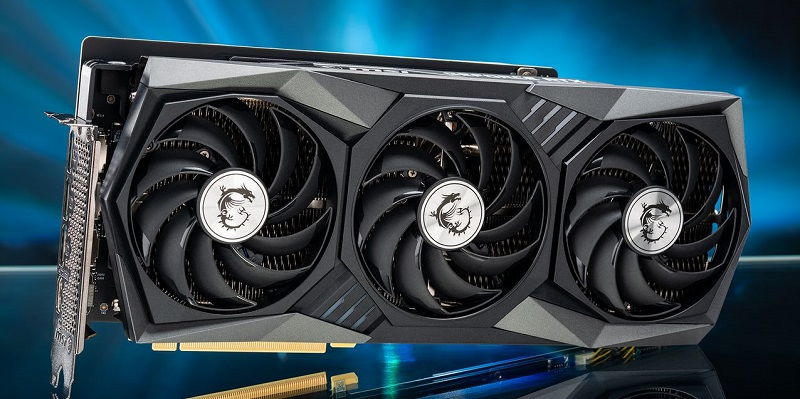In the fast-paced world of computer graphics, Nvidia has emerged as a leading innovator in delivering powerful and cutting-edge processing capabilities. With the anticipation building for their highly-anticipated release, Nvidia Blackwell, set for 2025, it’s no wonder that enthusiasts and professionals alike are eagerly awaiting information about this mysterious architecture. Despite the lack of details, there are some key expectations and speculations surrounding Blackwell that we will explore in this article.
Expectations for Nvidia Blackwell
One area where Nvidia has excelled in recent years is the implementation of real-time ray tracing technology. With Blackwell, we anticipate witnessing more mature ray-tracing capabilities than ever before. This could lead to more realistic lighting effects, enhanced reflections, and improved shadows that push the boundaries of visual fidelity. Additionally, we can expect further advancements in the performance and efficiency of tensor cores, enabling smoother and more efficient deep learning tasks.
Rumors suggest that Nvidia Blackwell might adopt a multi-chiplet module design, allowing for improved scalability and flexibility. This design paradigm has been previously embraced by competitors such as AMD and Intel, allowing for greater customization and power distribution. By adopting this approach, Nvidia can combine multiple chips, each specializing in specific tasks, to create a powerhouse solution for next-generation graphics processing.
Comparison with competitors
Nvidia’s decision to potentially embrace a multi-chiplet module design with Blackwell aligns them with their main competitors, AMD and Intel. Both companies have already implemented this design paradigm in their products, leveraging its benefits for improved performance and power efficiency. By catching up with this architectural shift, Nvidia aims to take advantage of the modular capabilities to create a more versatile and powerful graphics solution.
While AMD and Intel have made early strides in adopting the multi-chiplet module design, Nvidia’s entry into this realm signifies their commitment to staying at the forefront of innovation. With Blackwell, Nvidia aims to narrow the gap and even surpass its competitors, demonstrating that they are not willing to be left behind in the race for superior graphics processing power.
Speculations on Graphics Cards
GB202: Nvidia RTX 5090 and Nvidia RTX 5090 Ti
As we delve into speculation, the graphics card lineup for Blackwell becomes a subject of interest. Industry insiders propose that the GB202 architecture could potentially power the Nvidia RTX 5090 and Nvidia RTX 5090 Ti, offering groundbreaking performance for demanding gaming and professional applications.
GB203: Nvidia RTX 5080 and Nvidia RTX 5080 Ti
The GB203 architecture might find its way into the Nvidia RTX 5080 and Nvidia RTX 5080 Ti, promising a significant leap in graphics capabilities and processing power. These cards could redefine what gamers and content creators can achieve, bringing immersive experiences to life.
GB205: Nvidia RTX 5070 and Nvidia RTX 5060 Ti
Speculatively, the GB205 architecture could be found in the Nvidia RTX 5070 and Nvidia RTX 5060 Ti, offering a compelling balance between performance and value. These cards would cater to users seeking a high-quality graphics experience without breaking the bank.
GB206: Nvidia RTX 5060 and possibly Nvidia RTX 5060 Ti
The GB206 architecture is expected to power the mid-range Nvidia RTX 5060, boasting impressive performance at relatively affordable price points. There is also a possibility of a Ti variant, further enhancing the card’s capabilities and expanding its market appeal.
GB207: Nvidia RTX 5050 and Nvidia RTX 5050 Ti
Lastly, the GB207 architecture is likely reserved for the Nvidia RTX 5050 and Nvidia RTX 5050 Ti, serving as an entry-level offering for budget-conscious gamers and casual users. While performance might not be at the bleeding edge, these cards would still provide a significant upgrade over previous generations.
As the graphics industry brims with anticipation for Nvidia Blackwell’s release in 2025, the possibilities and potential of this enigmatic architecture continue to pique the curiosity of enthusiasts worldwide. With expectations of improved ray tracing, enhanced tensor cores, and the potential adoption of a multi-chiplet module design, Nvidia aims to push the boundaries of graphics processing power. While it remains to be seen how Blackwell will reshape the industry, one thing is certain: Nvidia is determined to maintain its position as a leading force in delivering cutting-edge graphics technology. Only time will reveal the true power and capabilities of Nvidia Blackwell, but until then, enthusiasts and professionals alike will eagerly await its arrival.

